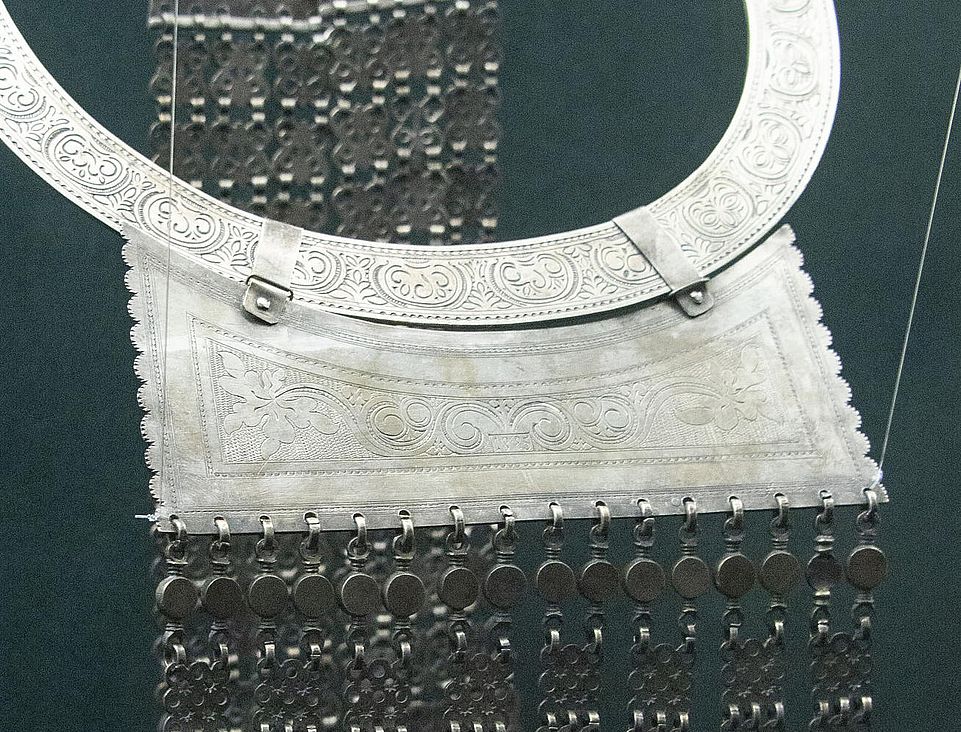Neck jewelry in the form of a hoop, or torc, has been known since the Bronze Age. In some nations they were worn by women, in others – by men, but at all times it was not only for decoration.
For example, in the Middle Ages in Russia, the hrivna was also worn as a sign of distinction. Russian vigilantes in the X-XI centuries received a neck hrivna as a reward. In the XII-XIV centuries, the hrivna gradually turned into an exclusively female adornment in wealthy families and for peasants also. In the 16th century in Russia, it was part of the wedding dress for both grooms and brides.

The Dolgans is a relatively young nation, and the 135-year-old rarity is almost half of its history.
“This highly artistic silver piece by a Yakut master, which was part of the Dolgan women’s festive costume, was purchased in 1984 from a resident of the Syndassko village, Elena Kirgizova”, says Bella Chuprina, curator of the Taimyr Museum’s ethnographic collection. “Hrivnas were made of thick wire, sometimes twisted, with loop-shaped bent ends. They were rarely fastened, more often they were squeezed so that their ends went far behind each other. Yakut-made hrivnas resemble Scythian and Russian jewelry”.
Most of the Dolgan jewelry is made by Yakut craftsmen, from alloys of various metals and silver. And they clearly show the ethnic connection with the Yakuts (, Evenks, Yakuts and Russians played a leading role in the formation of the Dolgan nation).
According to Bella Chuprina, there is another Dolgan silver hrivna in the museum, but without pendants in the back. The necklace from Syndassko is valuable for its completeness. It has a whole system of openwork chains and plates suspended from the hoop, both in the front and in the back.
Dolgan women wore hrivnas over a formal dress or fur coat. In Taimyr, they were part of the jewelry complex for brides from wealthy families and went out of use in the twentieth century.
The Taimyr Museum of Local Lore is proud of its collection of Dolgan jewelry. They can be seen not only in the museum exposition, but also on social networks.
Read about other unique items from local museums in the Artefacts section.
Text: Valentin Petrov, Photo: Taimyr Museum of Local Lore



